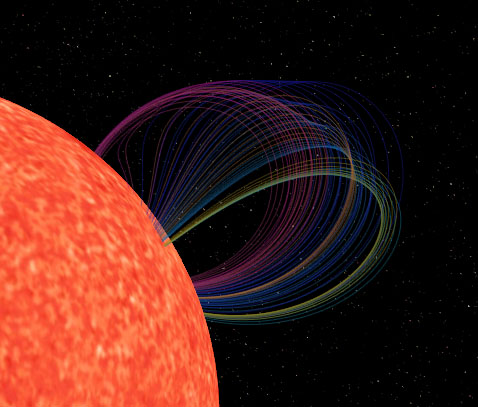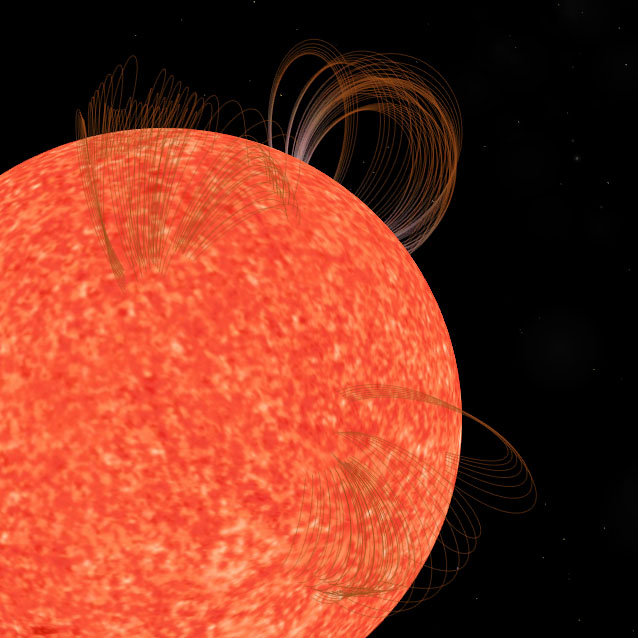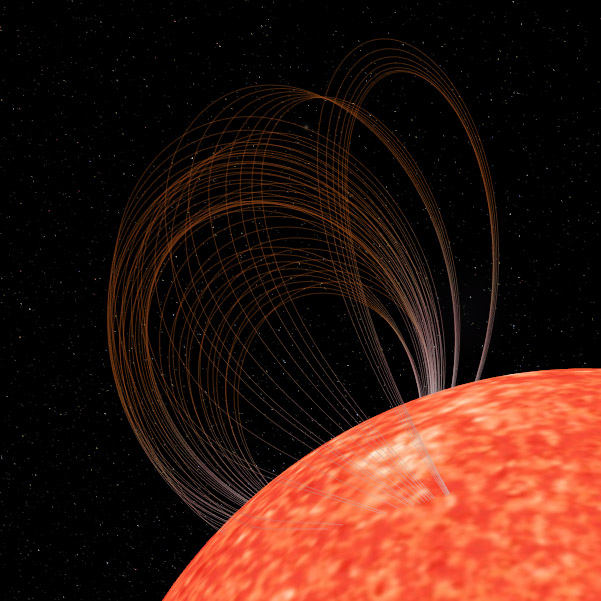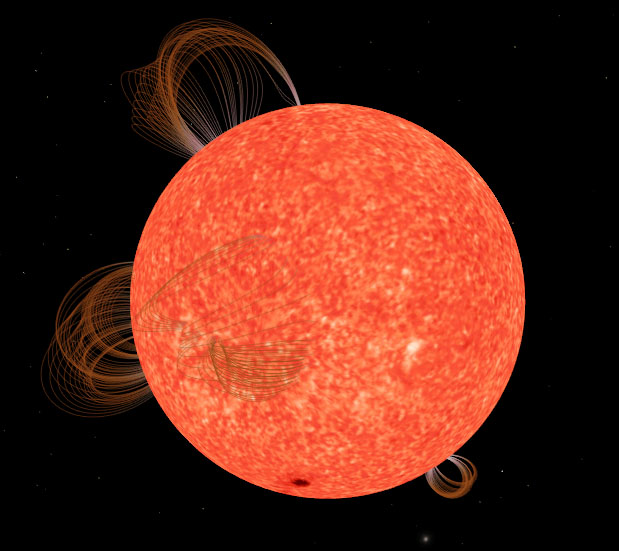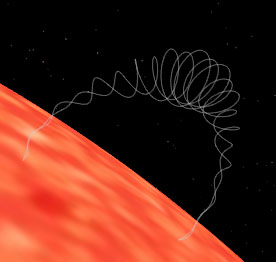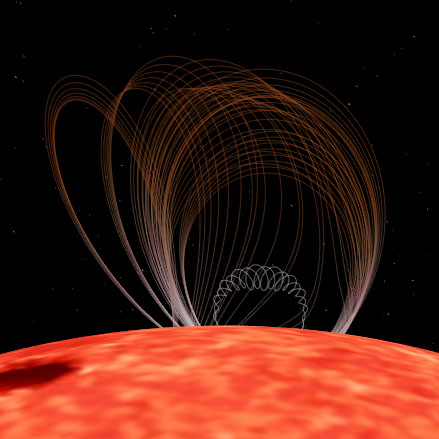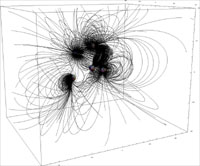Solar flare CMOD prototype (work in progress)
Posted: 12.07.2007, 23:14
Howdy folks.
I finally found an interesting configuration of a magnetic field which simulates very well solar flares. Here's a picture of a real solar flare that I wanted to represent in Celestia :
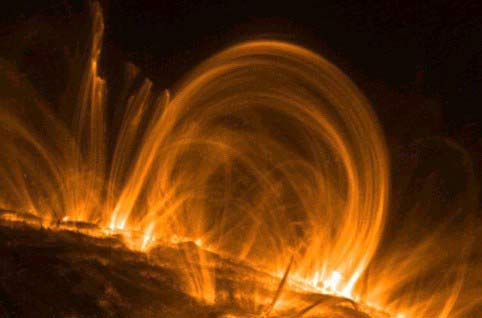
Using Mathematica, it was actually extremely difficult (at least to me) to find some nice configuration of field lines which gives something like on the picture above, since they tend to behave in a cahotic way. A small variation of parameters (there are LOTS of them) could change dramatically the field global character. Starting from some "initial conditions" which draw a field line, you can't predict where the line will end or what will be its extent in space. Since there are so much parameters to control (dipole strengh, dipoles number, dipoles position and orientation in space, number of field lines to draw, field line "initial condition", etc), I was at the point to kill the whole project, until I got this nice result today. So here's a complete rotation around the model (anticlock way rotation, as seen from above). Don't worry about the colors, they will be changed at a later stage :
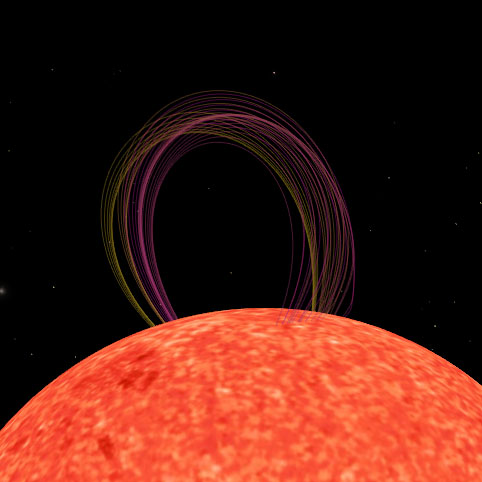
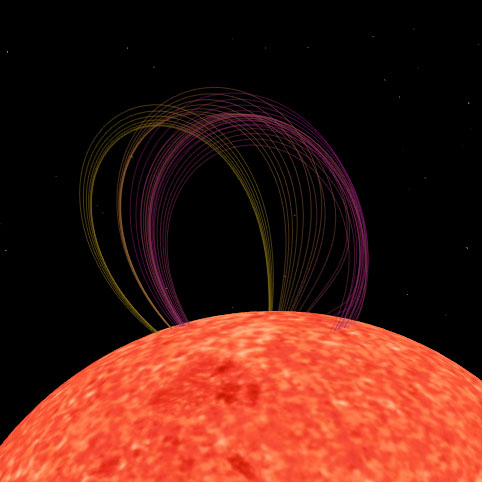
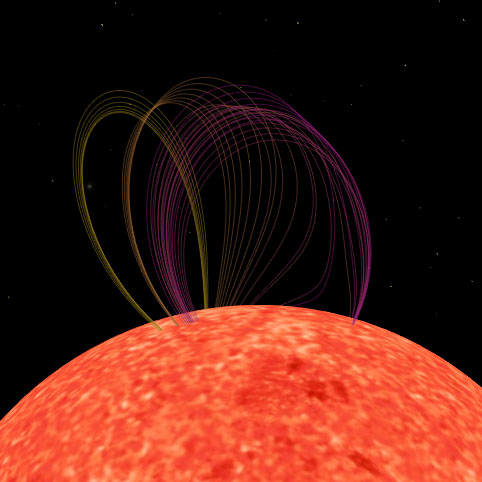
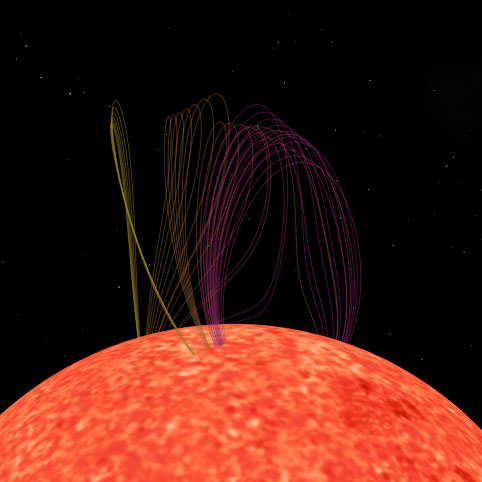
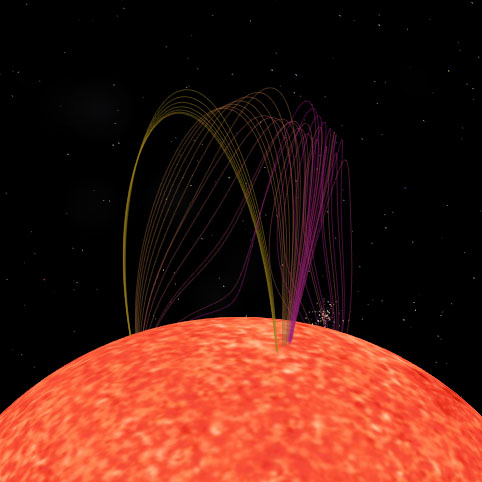
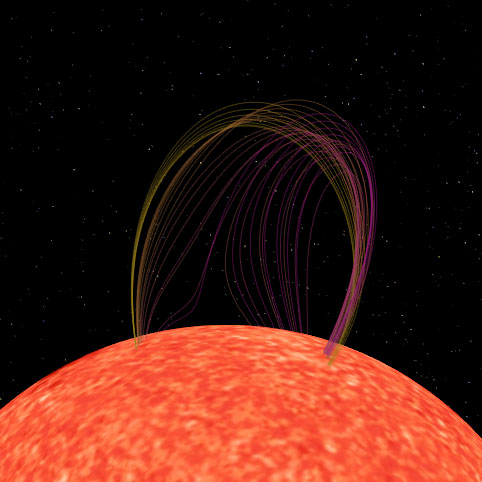
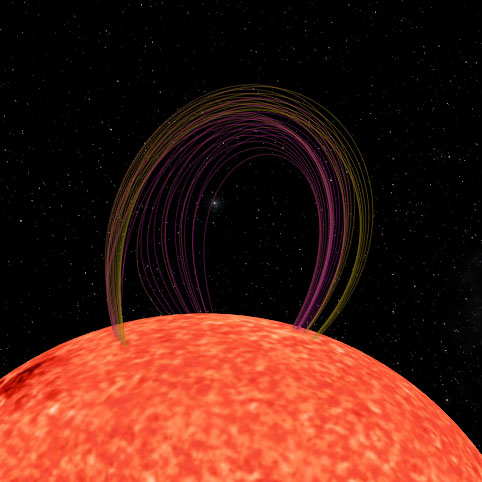
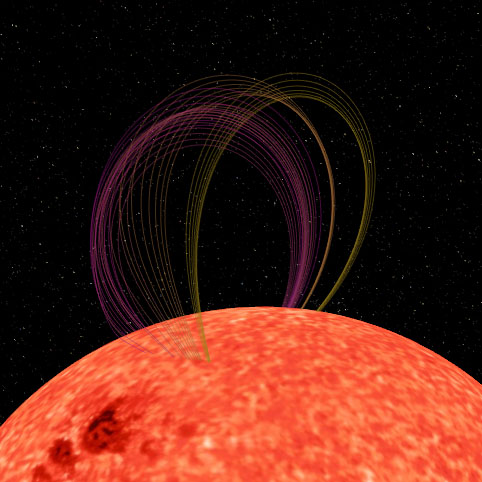
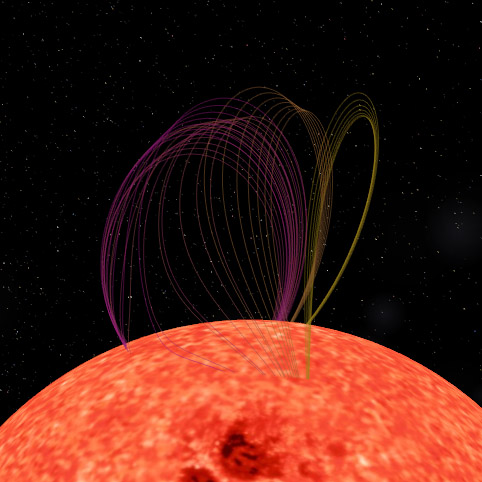

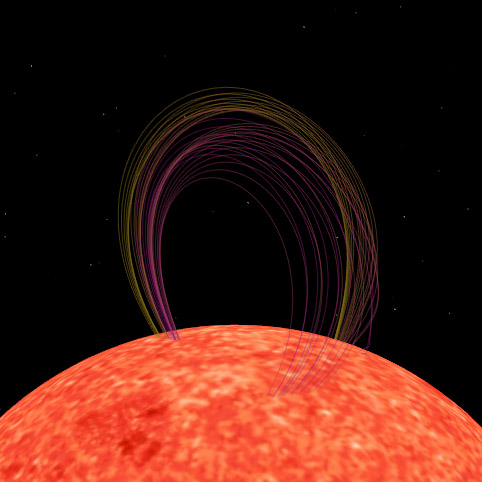
My Mathematica notebook which created this model is a complete mess ! I'll have to do some code cleaning and optimisation before doing the final model.
I'll have to do some code cleaning and optimisation before doing the final model.
Of course, the star texture need to be changed to place the sun's spots at a proper location.
Here are more pictures of the real thing, which inspired me :
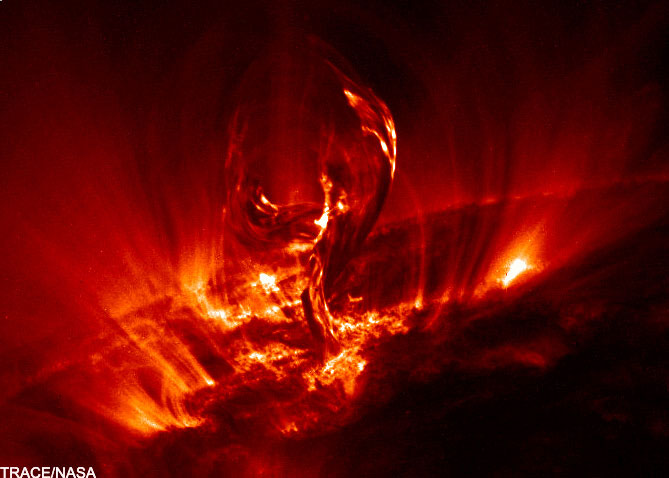
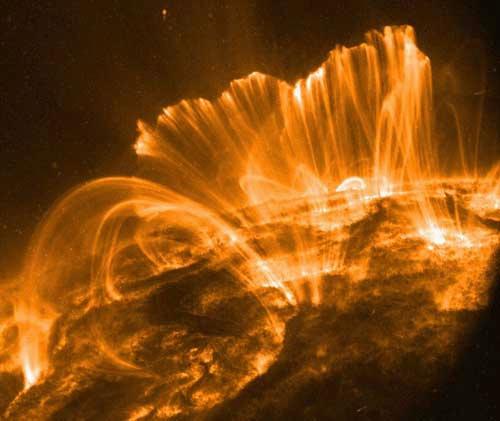
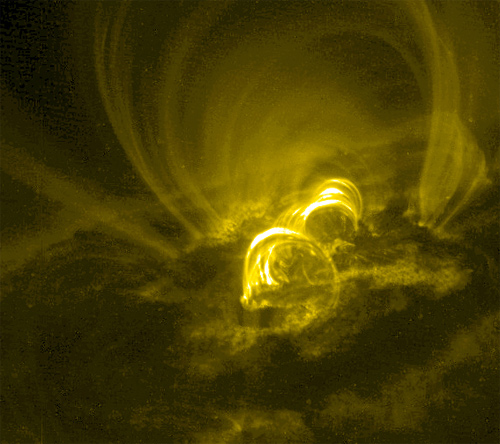
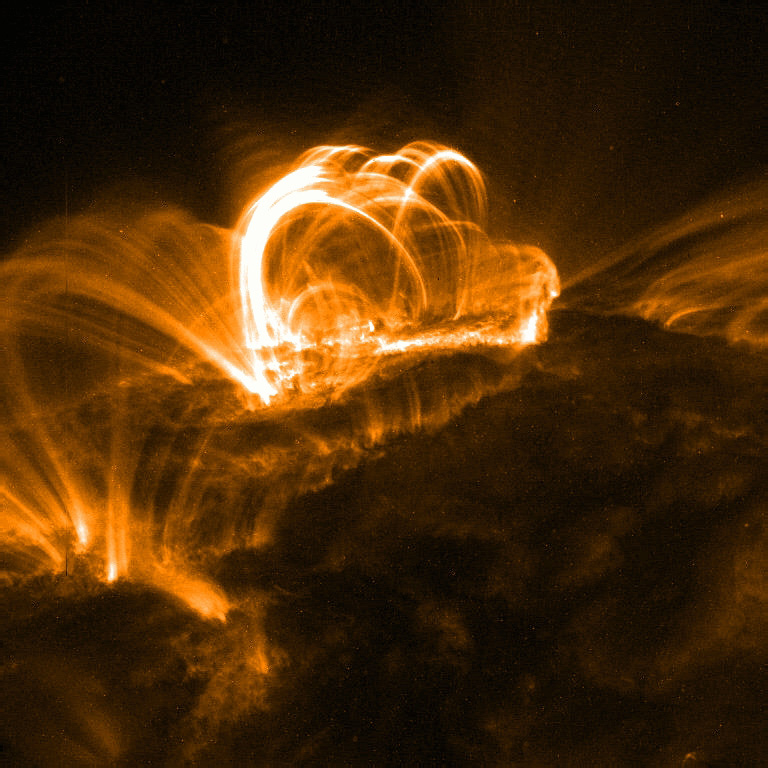
I absolutely love the last three pictures ! The field lines are so clear on them ! Here's a video showing the typical time evolution of the real magnetic field lines :
http://www.nasa.gov/centers/goddard/mpg ... 20x240.mpg
I finally found an interesting configuration of a magnetic field which simulates very well solar flares. Here's a picture of a real solar flare that I wanted to represent in Celestia :

Using Mathematica, it was actually extremely difficult (at least to me) to find some nice configuration of field lines which gives something like on the picture above, since they tend to behave in a cahotic way. A small variation of parameters (there are LOTS of them) could change dramatically the field global character. Starting from some "initial conditions" which draw a field line, you can't predict where the line will end or what will be its extent in space. Since there are so much parameters to control (dipole strengh, dipoles number, dipoles position and orientation in space, number of field lines to draw, field line "initial condition", etc), I was at the point to kill the whole project, until I got this nice result today. So here's a complete rotation around the model (anticlock way rotation, as seen from above). Don't worry about the colors, they will be changed at a later stage :











My Mathematica notebook which created this model is a complete mess !
Of course, the star texture need to be changed to place the sun's spots at a proper location.
Here are more pictures of the real thing, which inspired me :




I absolutely love the last three pictures ! The field lines are so clear on them ! Here's a video showing the typical time evolution of the real magnetic field lines :
http://www.nasa.gov/centers/goddard/mpg ... 20x240.mpg
